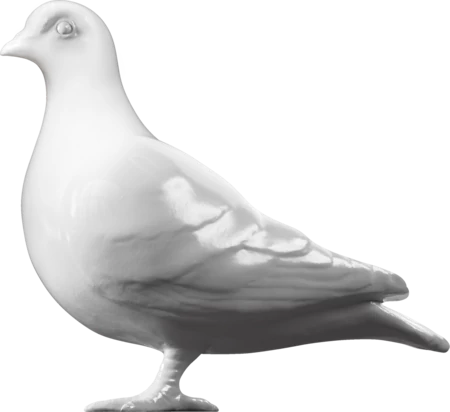Social History — C.1874-1910
Psycho
'Psycho' was conceived by the illusionist John Nevil Maskelyne and his fellow inventor John Algernon Clarke. Psycho is a mechanical puppet designed to play hands of the card games Whist and Nap. He is dressed in a Chinese-style silk tunic featuring a dragon design on the chest. He is also wearing an Indian turban. His physical appearance reflects how in the Victorian age, Western Europeans associated the Orient with the mysterious.
The rationale behind the illusion is that the plinth that Psycho sits on is too small for a man or even a child to fit inside. Psycho performed on top of a transparent glass cylinder which further baffled audiences by proving that Psycho was not controlled by wires or human hands. In reality Psycho was probably operated by using bellows to push compressed air through the glass cylinder up into the plinth beneath the puppet. Reciprocal bellows would have moved the internal mechanism controlling Psycho's hand to select the appropriate playing cards. The exact workings of this mechanism are unclear. Hidden backstage would have been the operator, Maskelyne's stage partner George Cooke, who could see Psycho's cards from the wings. Another of Psycho's tricks was to smoke a cigarette through a holder. He could also nod or shake his head to answer questions from Maskelyne or a member of the audience.
Maskelyne debuted the Psycho illusion with Cooke at 'England's Home of Mystery' the Egyptian Hall at Piccadilly in January 1875. Hugely popular with audiences, Psycho created a considerable buzz in the media as commentators debated how the illusion worked. Unfortunately for Maskelyne, he had not registered the patent for the illusion which meant it became public domain. Clarke was able to cover their tracks partially by writing a coy reference to Psycho in the Encyclopedia Britannica. He wrote that the 'joint inventors patented a method of controlling the speed of clockwork mechanism by compressed air or gas...it is not known whether the principle...was applicable in any way to the invisible agency employed in Psycho.' Maskelyne denied that the secret had ever got out and offered £2000 to anyone who could emulate Psycho's act using what he described as an 'automaton'. Psycho was not in fact a real automaton because he was in some way operated by a human being.
Psycho appeared in over 4000 performances at the Egyptian Hall before going into retirement. He made a final appearance at St George's Hall, Langham Place, in 1910. He was donated to the London Museum by the Maskelyne family in 1934.
- Category:
- Social History
- Object ID:
- 34.144
- Object name:
- Psycho
- Object type:
- Artist/Maker:
- Maskelyne, John Nevil
- Related people:
- Related events:
- Related places:
- Production date:
- c.1874-1910
- Material:
wood, metal, silk, velvet, hair
- Measurements/duration:
- H 1280 mm, W 620 mm, D 710 mmm WT 50 kg (overall)
- Part of:
- —
- On display:
- —
- Record quality:
- 100%
- Part of this object:
- —
- Owner Status & Credit:
Permanent collection
- Copyright holder:
digital image © London Museum
- Image credit:
- —
- Creative commons usage:
- —
- License this image:
To license this image for commercial use, please contact the London Museum Picture Library.
